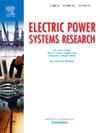基于PMU数据的高IBR渗透现代电网实时系统强度估计
IF 4.2
3区 工程技术
Q2 ENGINEERING, ELECTRICAL & ELECTRONIC
引用次数: 0
摘要
随着基于逆变器资源(IBRs)在电网中的应用越来越广泛,系统强度的实时估计已成为系统运营商确保电网稳定性和可靠性的关键要求。本文介绍了一种利用相量测量单元(PMU)数据进行系统强度估计的鲁棒方法,消除了对基于模型的信息的需要。所提出的方法利用Thevenin等效参数来评估特定总线上的系统强度。为了解决由连续系统频率变化引起的电压和电流测量中的相角漂移,应用校正,然后将三个连续相量测量同步到一个公共参考框架。这些同步测量值用于计算Thevenin等效参数。该方法的主要特点包括一种新的方向检测算法,该算法解决了潮流方向对系统强度估计的影响,确保了准确的实时评估。与先前发表的文献主要关注负载总线上的系统强度估计不同,该方法提供了一种适用于各种操作场景的综合方法。其他增强功能,如通过高级过滤技术去除异常值,进一步提高了该方法的鲁棒性和实用性。使用来自161千伏、275千伏和500千伏系统的实际现场PMU数据进行验证,证明了其有效性,同时集成到广域监测系统(WAMS)平台中,强调了其操作使用的准备情况。仿真结果和现场数据验证了该方法在现代电网实时应用中的可靠性和准确性。本文章由计算机程序翻译,如有差异,请以英文原文为准。
Real-time system strength estimation using PMU data for modern grids with high IBR penetration
With the increasing penetration of Inverter-Based Resources (IBRs) in power grids, real-time estimation of system strength has become a critical requirement for system operators to ensure grid stability and reliability. This paper introduces a robust method for system strength estimation using Phasor Measurement Unit (PMU) data, eliminating the need for model-based information. The proposed approach leverages Thevenin equivalent parameters to evaluate system strength at a specific bus. To address the phase angle drift in voltage and current measurements caused by continuous system frequency variations, corrections are applied, followed by synchronization of three consecutive phasor measurements to a common reference frame. These synchronized measurements are used to compute Thevenin equivalent parameters. Key features of the proposed method include a novel directional detection algorithm that addresses the impact of power flow directions on system strength estimation, ensuring accurate real-time evaluation. Unlike previously published literature, which primarily focused on system strength estimation at load buses, this method provides a comprehensive approach applicable across various operating scenarios. Additional enhancements, such as outlier removal through advanced filtering techniques, further improve the robustness and practical applicability of the approach. Validation using actual field PMU data from 161 kV, 275 kV and 500 kV systems demonstrates its effectiveness, while integration into a Wide Area Monitoring System (WAMS) platform underscores its readiness for operational use. Results from simulations and field data confirm the reliability and accuracy of the method for real-time applications in modern grids.
求助全文
通过发布文献求助,成功后即可免费获取论文全文。
去求助
来源期刊

Electric Power Systems Research
工程技术-工程:电子与电气
CiteScore
7.50
自引率
17.90%
发文量
963
审稿时长
3.8 months
期刊介绍:
Electric Power Systems Research is an international medium for the publication of original papers concerned with the generation, transmission, distribution and utilization of electrical energy. The journal aims at presenting important results of work in this field, whether in the form of applied research, development of new procedures or components, orginal application of existing knowledge or new designapproaches. The scope of Electric Power Systems Research is broad, encompassing all aspects of electric power systems. The following list of topics is not intended to be exhaustive, but rather to indicate topics that fall within the journal purview.
• Generation techniques ranging from advances in conventional electromechanical methods, through nuclear power generation, to renewable energy generation.
• Transmission, spanning the broad area from UHV (ac and dc) to network operation and protection, line routing and design.
• Substation work: equipment design, protection and control systems.
• Distribution techniques, equipment development, and smart grids.
• The utilization area from energy efficiency to distributed load levelling techniques.
• Systems studies including control techniques, planning, optimization methods, stability, security assessment and insulation coordination.
 求助内容:
求助内容: 应助结果提醒方式:
应助结果提醒方式:


